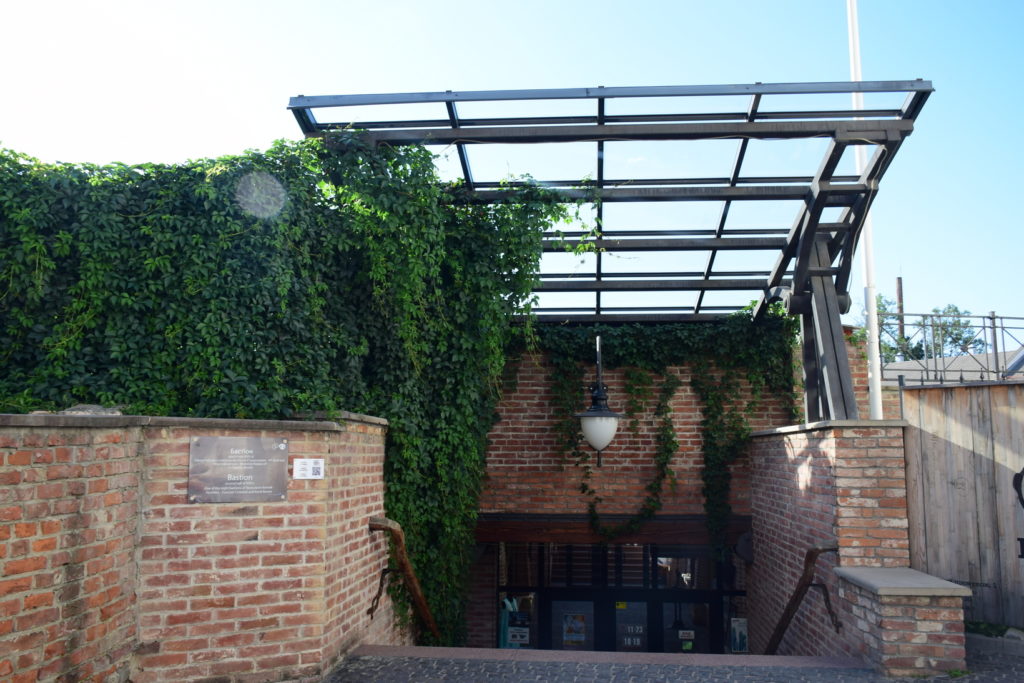Bastion of St. Andrew (1 Fortechnyi Lane)
Stanislaviv was founded in a quite turbulent period of the Polish history in 1654-1662. Soon after its
foundation, the city turned into a solid military fortification. It did not take long (1662-1672) before,
under the guidance of the French engineer François Corassini of Avignon, a fortress was constructed
in the interstream areas of Bystrytsia river. The city was surrounded by six earthy bastions, oak pale
fencings, fortress ditches were filled with water, and the city could only be reached through scaffold
bridges. From the south, the access to the city was blocked by the Black Forest and continuous bogs.
A little later, in the 1770s, the Italian engineer Karol Benoit worked on making fortifications more
firm. After that, hexagonal fortress turned into octagonal stretched eastward
Stanislaviv fortress was so strong that it impressed contemporaries and withstood the raids of the
Tatars. It did not cave in the fortifications of such large cities as Lviv and Krakow.
The city-fortress had the very suitable location not only for its defense, but also for trade since it was
situated on the ancient Voloskyi Path or so-called the Golden Path. Therefore, part of the profits, as
well as taxes from the peasants of the surrounding villages and urban craftsmen, were spent on the
city development.
Also in Stanislav, according to the then existing fortification requirements, underground tunnels were
built to protect people from enemy attacks. Unfortunately, detailed drawings of these underground
passages have not been preserved. However, sometimes, there are gaps that occur here and there in
the old part of the city center proving the existence of an entire network of underground passes.
There are legends that they stretch far beyond the city. During the Austro-Hungarian Monarchy, the
fortress gradually began to lose its significance to the defense of the city. In 1804, in accordance with
the imperial order, people began to fill up ditches and dismantle ramparts, and till 1870, those
materials were used for building.
Nowadays, there is hardly any trace of the fortress city. The substantial part of one bastion has been
preserved. Its remnants are a brick wall on Fortechnyi Lane.
In 2002, the reconstruction project of the first bastion began. It was decided to include bastion in a
new souvenirs and gifts gallery project. Visitors to the gallery have a chance to see the living history
of our city through old fortress walls carefully restored and hidden under glass. Right here there are
various cultural events that propagate the history of the city and glorify the city itself. In particular,
the Blacksmiths Festival (Sviato Kovaliv) is the traditional annual International Blacksmiths Festival in
Ivano-Frankivsk.
